Mitsubishi reckons the Triton deserves to be the third best-selling ute in the Australian market. In fact, it thinks it deserves to be challenging the Ranger and HiLux for out-and-out dual-cab supremacy, but how about we start with third place and see where we go from there, hey?
Third place, of course, is currently occupied by the Isuzu D-Max, which means Mitsubishi will need to unseat it. To do it, it has launched a new-gen Triton, which is now bigger, more powerful, more practical, and has more space in the cabin.
In fact, Mitsubishi says the Triton has been improved right across the dual-cab board.
But has it done enough? Let’s find out.
Mitsubishi Triton 2024: GLX (4X2)
| Engine Type | Diesel Turbo 4, 2.4L |
|---|---|
| Fuel Type | Diesel |
| Fuel Efficiency | 7.5L/100km (combined) |
| Seating | 5 |
| Price From | $43,450 - $50,490 |
| Safety Rating |
|
Price and features – Does it represent good value for the price? What features does it come with?
The Triton can be had as an entry-level GLX 4x2 ($43,690) or 4x4 ($50,940), before the range steps up to the GLX+ 4x4 ($53,290), the GLS ($59,090), and then tops out with the flagship GSR 4x4 ($63,840), all of which share the same diesel engine and six-speed transmission.
The bad news? Every Triton model is more expensive, and not by a little bit. We're talking between roughly $3K and $8K here.
The cheapest Triton GLX model is a mix of utility and technology, and features 17-inch steel wheels, cloth seats, vinyl flooring, electric lumbar support for the driver, keyless entry, a 7.0-inch driver display and second 9.0-inch multimedia screen with navigation, Android Auto and wireless Apple CarPlay.
.jpg)
Stepping up to the GLX+ adds a rear diff-lock, side steps, fog lamps, 17-inch alloys, LED brake lights, tinted rear privacy glass and some added safety kit (all of which we'll get to in a moment).
Springing for the GLS earns you Mitsubishi's 'Super Select 4WD II' system - including its Torsen centre differential and some added off-road functions.
There are also 18-inch alloys, a tray liner, heated electric door mirrors, LED lights, a black grille, dual-zone climate and push-button start.
Finally, the flagship GSR is fitted with black 18-inch alloy wheels, a body-colour side bars across the black grille, a sport bar and roof rails.
Inside, there are leather seats, unique floor mats, better cabin materials and power driver's seat adjustment.
.jpg)
Design – Is there anything interesting about its design?
Well, if you like utes, have I got some good news for you! Because the new Mitsubishi Triton looks a lot like, well, a ute.
That's not to undersell the work Mitsubishi has done here. There's a new 'Yamabuki Orange' colour for the flagship GSR, for example, and it looks particularly sharp with the black alloys and silver skid plate.
I even like the new body-colour lines crossing over the top of the blacked-out grille – though I concede they could be polarising.
But, yes, it's a ute.
.jpg)
Inside, though, it's a vastly improved space. We've spent most our time in the top-spec model, and it's a solid mix of utility, technology and comfort.
It feels vaguely premium, owing to clever cabin materials, but never fussy, which would feel out of place in a dual cab that is still ostensibly a workhorse.
I love the fact that all your core functions – climate controls and the like – are still controlled by tactile switches, and I even love the old-school handbrake.
I'm also a big fan of the big-enough central screen with its wireless Apple CarPlay and Android Auto, the wireless charger and USB connections. It's tough meets tech, and it all works really well.
.jpg)
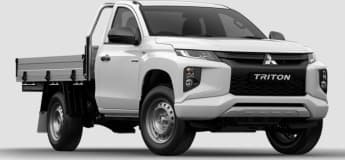
Practicality – How practical is its space and tech inside?
The Triton's practicality perks are split into two camps – the tough stuff, and the workhorse stuff.
But let's start with the former. While there are two-wheel drive Triton options, most send power to all four wheels.
However, the best off-road gear starts with the GLX+, which adds a rear differential lock, while the GLS and GSR add Mitsubishi's Super Select 4WD-II – which incorporates a Torsen centre differential, Terrain Control and Hill Descent Control.
We put the GSR through its paces on a genuinely tough off-road course that required plenty of low-range crawling, and the Triton shone in the rough stuff.
Onto the workhorse stuff, every Triton will tow a 3.5-tonne braked trailer, while payloads range from 1030kg to 1110kg, depending on the model, courtesy of a slightly bigger 1555mm tray. The tray has been lowered slightly, too, to make loading or unloading easier.
The Triton has also grown in every meaningful way, stretching 5320mm in length and 1865mm in width, and that means more space in the cabin. I'm 175cm, and found I had oodles of room in the back seat.
There are some other thoughtful practicality perks on offer, too. All the doors take 1.25-litre bottles, there's device storage, space for the clipboard and that sort of thing.
.jpg)
Under the bonnet – What are the key stats for its engine and transmission?
The engine is no bigger, but is now a twin-turbo offering, meaning the 2.4-litre diesel produces 150kW at 3500rpm and 470Nm from 1500rpm.
That power is fed through a six-speed automatic to two or all four wheels. There will be manual versions coming along shortly, but they're not here yet.
.jpg)
Efficiency – What is its fuel consumption? What is its driving range?
The Triton's four-wheel drive variants sip a claimed 7.7L per hundred kilometres on the combined cycle, with emissions pegged at 203g/km. Two-wheel drive models are marginally more efficient.
There's now also a 17-litre AdBlue tank, which you'll have to top up (AdBlue is a liquid that helps reduce emissions from diesel engines, by the way, which pairs with a particulate filter) as well as a 75-litre fuel tank.
At today's prices in Sydney, that would mean $150 to fill the Triton up, which – based on the claimed fuel use – should deliver a driving range of bang-on 1000km.
.jpg)
Driving – What's it like to drive?
Mitsubishi likes to describe the new Triton as "SUV-like", which makes sense given it sees the lifestyle segment of dual-cab ownership – you know, families who love towing and camping and that kind of thing – as a great untapped market for its workhorse.
And lots has been done to improve the Triton's on-road behaviour to better appeal to those customers, especially in the two top trim levels, which get a bespoke rear suspension to improve comfort.
It's also why this Triton was tested and tuned so much in Australia. In fact, there are two Triton suspension tunes, ours and the one other countries get.
_0.jpg)
That means plenty of Mitsubishi's Japanese engineers came to Australia during the Triton's development, driving not just the outgoing model but all of its competitors, and cycling through some 100 different front and rear suspension calibrations to settle on the right balance for the new model. The electric power steering was also tuned here.
The result is a vehicle that is far more comfortable on flowing roads than you might expect, while being no less capable off them. We put the Triton through some pretty challenging off-roading, and it barely broke a sweat.
But there is a caveat. It's comfortable... for a ute.
_0.jpg)
It's near impossible to get a stiff ladder-frame chassis to steer exactly like a road-focused SUV, but the Triton won't spark much in the way of complaints on long road trips.
The steering is nice, too. There's some sogginess on centre, but it is confident enough to encourage you to tip it into flowing corners at speed without making your pulse-rate spike.
There are still some ute reminders, though. Namely that kind of vehicle-wide shudder when you go over road imperfections, and a transmission that isn't quite as polished as the rest of the vehicle when you're cornering at freeway speed.
.jpg)
The six-speed automatic loves to sit in its highest gears, and so it will change up at will, even mid-corner.
The engine is predictably diesel-noisy, too, which is also noticeable when the stop/start system kicks in at traffic light.
But the added power is a hugely welcome addition, as are the tech and comfort and improvements, and so it feels like a generational leap forward for Mitsubishi's workhorse.
.jpg)
Warranty & Safety Rating
Safety – What safety equipment is fitted? What is its safety rating?
Gone are the days of utes getting the rough end of the pineapple when it comes to standard safety kit, which is a very good thing.
Even the cheapest GLX Triton scores eight airbags, including a front centre bag, along with a whole heap of high-tech active safety stuff.
Expect AEB with pedestrian, cyclist and junction protection, as well as auto-braking in reverse.
.jpg)
There's also adaptive cruise, blind-spot warning and lane change alert, active lane departure warning and prevention, front and rear parking sensors, rear cross-traffic alert, traffic sign recognition, auto high beams and a driver monitoring system.
Oh, and there's 'Front Cross Traffic Alert', but it's being offered as a no-cost dealer option, which I take to mean you need to ask for it.
Ownership – What warranty is offered? What are its service intervals? What are its running costs?
Like all Mitsubishi's the Triton is offered with a 10-year and 200,000km warranty and 10 years of capped-price servicing.
You only get the full decade-long warranty cover if you service with Mitsubishi, though, otherwise it drops to five years and 100,000 kilometres.
Servicing is required every 12 months or 15,000km, and the first five years are capped at $489 per visit. After that, it goes $799, $749, $949, $849 and $899, bringing your 10-year total to $6690, an annual average of, you guessed it, $669.
Verdict
There's no denying this new Triton is a marked improvement over the model it replaces. It drives better, has more power, a more comfortable cabin and more driver-friendly tech.
Whether that's enough to rattle the segment's leaders remains to be seen, but this feels like a far more modern ute for modern times.
Note: CarsGuide attended this event as a guest of the manufacturer, with travel, accommodation and meals provided.
Pricing Guides

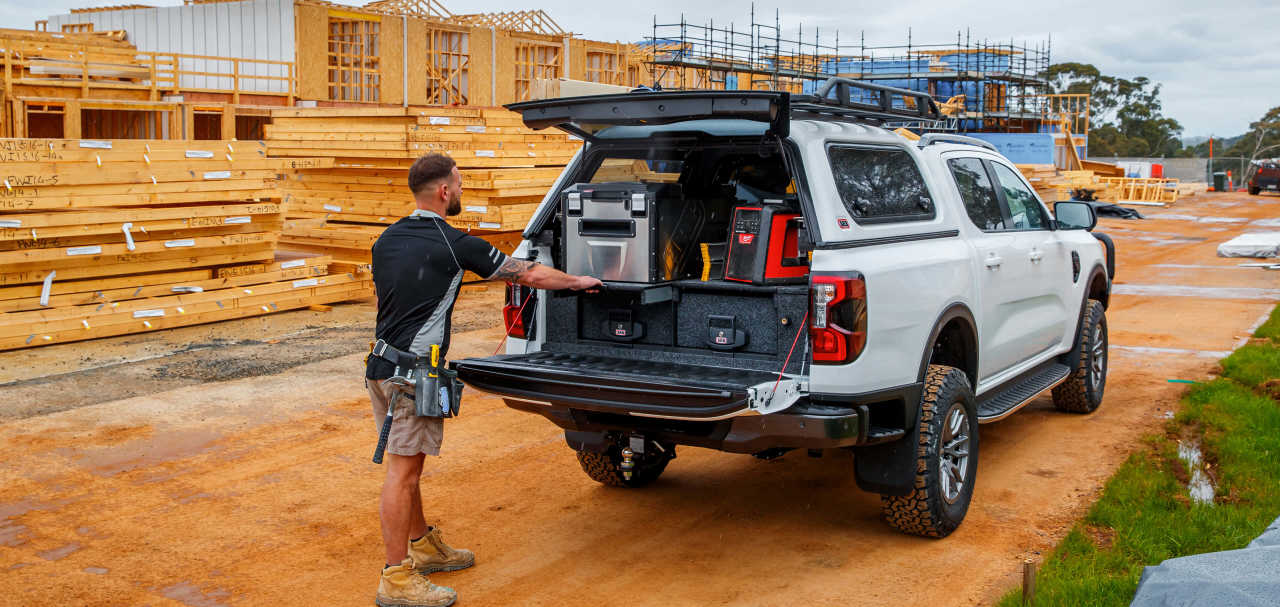

.jpg)
.jpg)
.jpg)
.jpg)
.jpg)

.jpg)



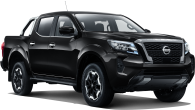

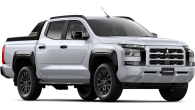


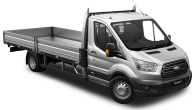
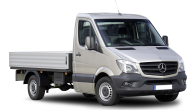
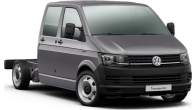
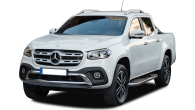



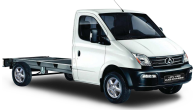


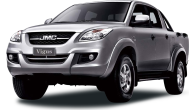
.jpg)
.jpg)




